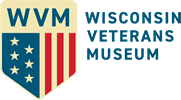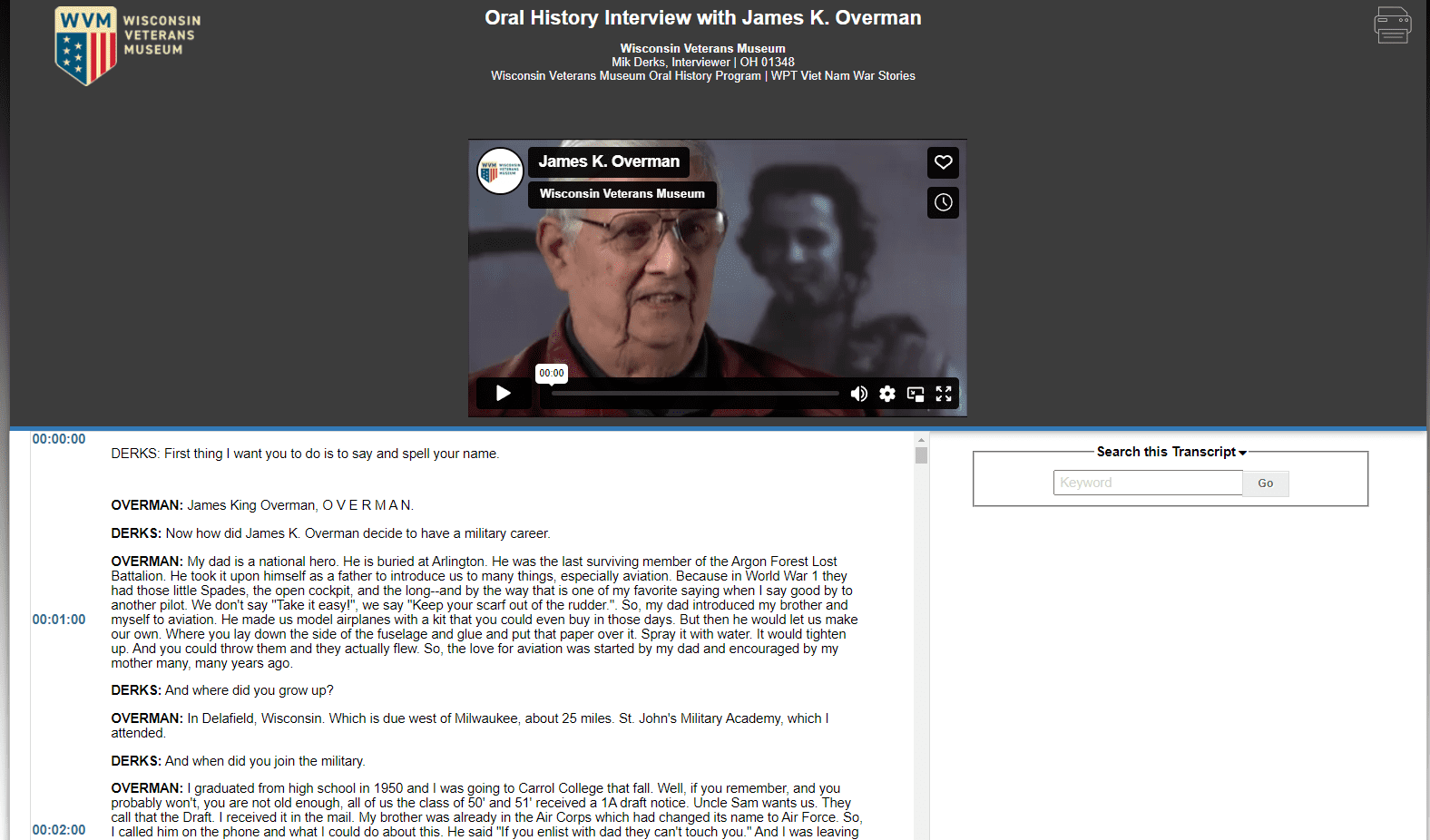James K. Overman of Delafield, Wisconsin, is the son of a World War I veteran and raised with a love for aviation. After receiving a draft notice in 1951, a year after graduating high school, Overman opted to enlist in the Air Force to ensure he got to fly planes instead of sitting in a foxhole. Overman passed the entrance exam for flight school, and the Air Force sent him to Goodfellow Air Force Base in San Angelo, Texas. At Goodfellow, he encountered discrimination due to his Oneida heritage. Overman recalls the event:
OVERMAN: When were finally called for pilot school, I went to Goodfellow Air Force Base in San Angelo, Texas. And that's the experience I was talking about earlier with some friends of what happened to me there about being Indian. Being an Indian in Delafield, Wisconsin, away from any reservation, so to speak, was never a problem. And my dad would not let it be a problem because he was married to a one hundred percent Oneida. The first day of pilot training, as a group, you go down to the building and then you break off into four. Because there are four students to one instructor. And you go to the table and stand at attention and wait to meet your instructor. As you could see on that picture that I showed you that's in color, when I was a cadet? That's the time it was. We were standing at attention and this lanky kind of loose guy walks up and he said, "Where are you from?" And I just happened to be the one he was talking to. And I was always taught, "Delafield, Wisconsin". "No, no, no. What the hell are you?" I said, "My dad is from Germany and my mother is a hundred percent Native American." "I want to tell you something, Indian. There are no Indians who are going to ever fly my f-----g airplanes." Wow. My dream was to take anything to get that brown bar and to be a pilot. And this guy's insulting me. And for once in my lifetime, I knew enough to keep quiet because the goal was bigger than this dummy.
Overman excelled in pilot school, and the military assigned him to Korea. After briefly serving there, he returned to the United States to attend instrument-pilot instructor school in Texas. He graduated first in his class and then worked as a pilot instructor at the school for six years. At this point, the fighting in Vietnam increased, and the Air Force sent Overman to Okinawa in May 1965. While based in Okinawa, Overman flew 170 combat missions over Vietnam and Laos. As part of the Jolly Green Giant rescue missions, Overman helped to rescue downed pilots and Green Berets in dangerous territory. Jolly Green Giant was the nickname for the Sikorsky HH-3E helicopter used to perform search and rescue missions. Here, Overman describes how a rescue mission worked:
OVERMAN: A-1Es out of Nakhon Phanom [Royal Thai Air Force Base] would start the rescue. When a pilot was down, if I was a wingman, I would back off so the enemy wouldn't know we were circling right over. I would back off and start to strike. When Nakhon Phanom was notified, they launched two A-1Es, a Proctor of an airplane, because it's slower, and they can stay on target longer. They would come in and they knew exactly where that pilot was underneath the hundred-foot canopy of those big trees. And they'd fly on each side of him and release a gas. And that gas was-- I don't know the name of it, but I will when I hear it. That gas, if you were a enemy with a rifle waiting to shoot that helicopter down that they knew was coming, what it does was work on your-- all your-- that you breath with in your brain, and you're frozen. You cannot move, and all you can do is watch that damned helicopter lower the penetrator, pick up that downed pilot, and take off. And about thirty minutes after they first got in on at the sides, it's often they got nobody to shoot at. That's how the Green Giant works on a rescue. However, you don't always get that gas down through the trees to get those guys and at the sides and they shoot at the helicopter. The Jolly Green organization is the heaviest, highest decorated Air Force unit ever to fly in any war. And it's not only the pilots that get the awards, it's that guy on the penetrator that is wide open. And not only wide-open, they try to get as low to the trees as they can so he can get cover going down through the trees. But when he's-- you know how heavy branches are. Have you ever cut a tree down? But he's gotta penetrate down below. He's gotta get to that downed pilot, either put him on there, or he climbs on you and up.
After completing his service with other units in the Vietnam War, the Air Force awarded Overman multiple combat medals, including three Distinguished Flying Crosses. Two of his units received Presidential Unit Citations for extraordinary heroism. As a member of the Oneida Nation, Overman is one of the most decorated Native American Air Force pilots in history.
To listen to the complete interview, click on the image below or here:


